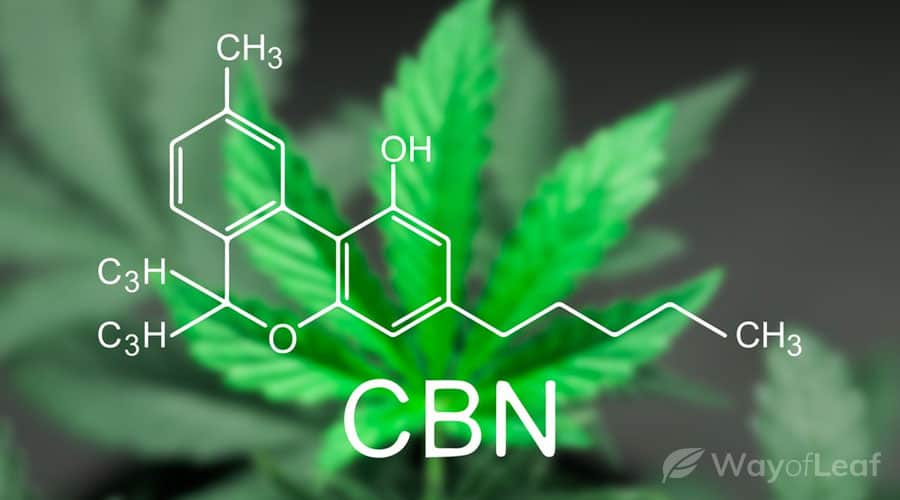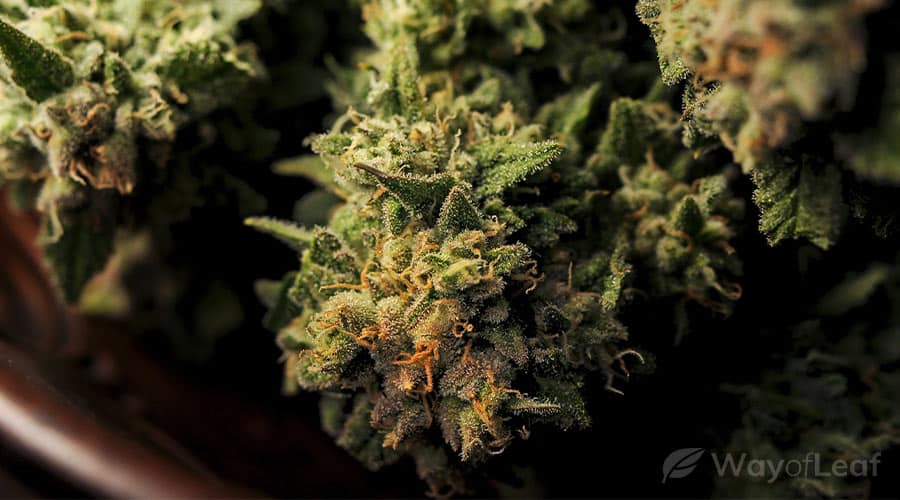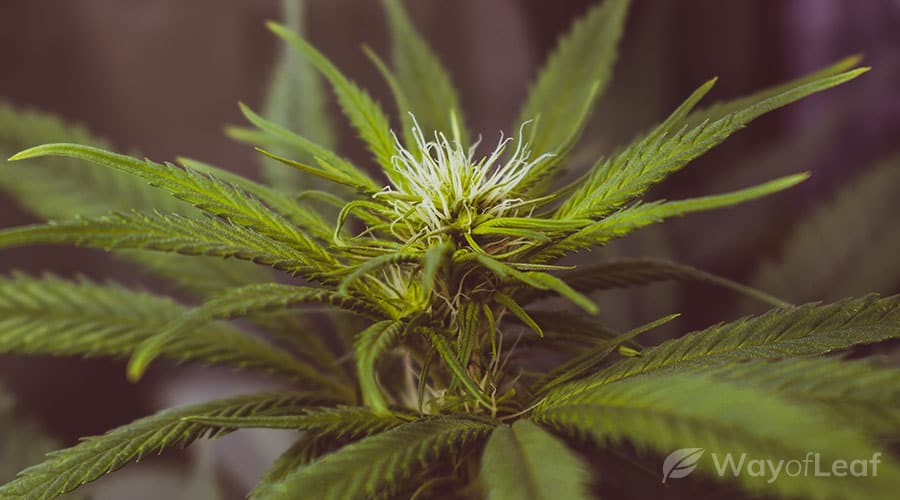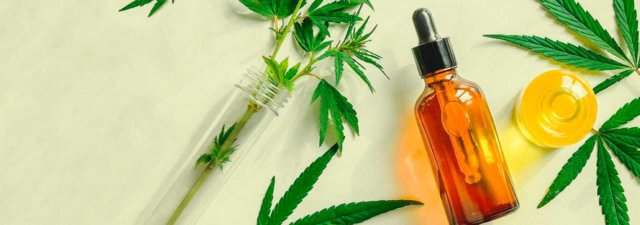Up until recently, we knew relatively little about the compounds in the marijuana plant. Fast forward to today, and scientists have identified over 110 different cannabinoids and hundreds of other compounds.
THC (the chemical that makes you high) and CBD (the non-intoxicating one) are the two most popular cannabinoids found in the cannabis plant.
However, there are dozens of other cannabinoids that are potentially useful too. This is the case whether you combine them with THC and CBD or attempt to extract them. Those with limited knowledge of cannabinol (CBN) believe it is practically irrelevant, as most are unaware of its usefulness.
In this article, we will perform an in-depth analysis of CBN. Then, with this knowledge, you can decide if it is something you are interested in using.
What Is CBN?
CBN is a mildly intoxicating compound in marijuana and is unique to the plant. Like the vast majority of cannabis components, CBN is fat-soluble, not water-soluble.
It has a specific relationship with THC because, unlike other molecules, CBN doesn’t come directly from the marijuana plant. Instead, it forms from the exterior oxidation of THC. In other words, THC converts into CBN during its degradation. When you cut and store cannabis, THC ultimately becomes CBN.

The acid form of THC, THC-A, gets converted to CBN-A when it is exposed to air for a significant period. The presence of air causes THC-A to lose hydrogen molecules, and then it undergoes oxidation. The result is the acid form of CBN.
You can then treat the compound with UV light and heat and convert it to CBN. It dissolves well in methanol and ethanol. Poorly stored marijuana plants are often high in CBN.
Since CBN is the breakdown of THC as the intoxicating compound ages, people often dismiss it. After all, you only find it in stale buds, so how useful can it be?
However, recent research has determined that CBN potentially has an array of medicinal benefits. According to Steep Hill Labs, it is the most sedative of all cannabinoids. Just 5mg of CBN is reportedly the equivalent of 10mg of Valium in body relaxation terms. Although CBN has some intoxicating properties (it is derived from THC, after all), they are about 10% as potent.
What Is the Difference Between CBN & CBD?
CBD is one of the most abundant cannabinoids in marijuana and can comprise up to 40% of cannabis resin. It doesn’t cause consumers to get high, and people generally use it for medicinal rather than recreational purposes. CBD produces anxiolytic effects that reduce the hallucinogenic effects of THC. Unlike CBN, CBD does not appear after oxidation as it is already abundant in the plant.
CBD directly acts on the endocannabinoid system (ECS) to influence anandamide levels. As already mentioned, CBN only occurs by the exposure of weed to air and the subsequent degradation of THC.
CBN doesn’t seem to have a direct effect on the ECS. Overall, experts believe CBN reduces the potency of marijuana. It is also a weak partial agonist at the two cannabinoid receptors, CB1 and CB2. At present, medical researchers have yet to understand the metabolic effects of CBN fully. With CBD, there is far more data available.
What Is CBN Used for?
The benefits of CBN are manifold. First and foremost, CBN is by far the most potent sedative of any identified marijuana compound. It may help you get a restful night’s sleep without the grogginess or side effects of prescription sleeping pills. Evidence of its ability to treat insomnia goes back as far as 1976. A study from 1995 on insomniac mice all but proved its efficacy concerning promoting better sleep.
As a result, one of the primary uses of CBN is to treat insomnia. As we mentioned above, it is even more sedative than Valium. THC-high marijuana strains that also contain CBN and myrcene may be good options if you’re sleep-deprived.
CBN is synergistic with Delta 9 THC and CBD regarding sleep inducement. When you combine it in the right ratios, it may provide at least six hours of sleep without you waking up feeling drowsy.
Popular Misconceptions About CBN Weed
When you check out the potential benefits of CBN below, you will likely be surprised to note that we haven’t included it as a sleep aid. It has a reputation for providing sedative qualities, but this isn’t necessarily the case.
There is little research into CBN acting as a sedative. A study published in Pharmacology in 1975 is one of the few examples, and its participants didn’t feel sleepy after using cannabinol.

Perhaps one reason for this misconception relates to anecdotal reports of how older marijuana makes users feel tired and sleepy. The assumption is that since CBN is degraded THC, it is the cannabinoid responsible for this feeling.
Contrary to popular belief, CBN doesn’t cause sedation or sleepiness on its own.
What’s more likely is that a combination of THC and CBD is what causes sedation. The volunteers in the study above found that mixing the two cannabinoids provided a greater level of sleepiness than either one alone. Another explanation is that older marijuana is also high in oxygenated sesquiterpenoids, which are linked with causing sleepiness.
Another misconception is that CBN products are non-intoxicating. While CBN is unlikely to make you feel high by itself, it can intensify the euphoria felt from THC. Therefore, you’ll need to use CBN without THC to avoid feeling intoxicated.
CBN Benefits
Anti-Inflammatory
Like other cannabinoids such as CBD and THC, CBN works as a potent anti-inflammatory agent in your body. Although a certain amount of inflammation is perfectly fine as it is an adaptive bodily function, too much causes illness.
Like CBD, CBN doesn’t interact strongly with the CB2 receptor, but it does modulate the levels of endocannabinoids. CBN influences specific immune cells to produce anti-inflammatory effects and even impacts levels of other compounds known to cause inflammation.
Anticonvulsant
An anticonvulsant is a compound capable of reducing epilepsy-related seizures. Researchers have found that CBN is almost as effective an anticonvulsant as THC and CBD.
Increasing Appetite
Admittedly, the research has only involved rats. The study found that when rodents consumed CBN, they ate larger food portions more regularly and longer. The likely reason for this is the impact of CBN on the CB1 receptor. As CBN has a far weaker intoxicating effect than THC, it is arguably a better option to increase appetite.
Bone Formation & Healing
CBN could help heal bones as it recruits stem cells from your bone marrow. Stem cells are converted into various cell types, including muscle, fat, cartilage, and bone cells. CBN could be responsible for increasing fibroblast cells, which greatly aid the healing of bone. The effects of CBN might stretch to bone formation, which means faster recovery from injured tissues and fractured bones.
Chronic Pain Relief
Medical marijuana is known to relieve chronic pain, and CBN might play a more significant role than you think. As CBN comes from degraded THC, it is unsurprising that it acts like an intoxicating compound in some ways. For example, it stimulates the release of peptides from sensory nerves, which helps decrease pain sensation.
According to new research, the painkilling effects of CBN are independent of CB1 and CB2 receptors. They possibly come from another cannabinoid receptor that has yet to be discovered.
Vasorelaxation
This is the process of relaxing blood vessel walls, which results in the fall of blood pressure. CBN acts as a vasorelaxant, which means it might be useful if you have a condition such as glaucoma. It may increase the blood flow to the eyes via vasorelaxation and reduce pressure in the eye. The process is also helpful for people with conditions such as heart disease or hypertension.
Antibacterial
Researchers tested the effects of five significant cannabinoids, including CBN, on different strains of the superbug, MRSA. These antibiotic-resistant bacteria can cause fatal staph infections, and their prevalence is increasing due to the nation’s overreliance on prescription drugs. The team found that CBN has potent antibacterial effects, and therefore, it could become an important MRSA treatment.
Burn Treatment
CBN potentially has a hypothermic effect, which means it lowers body temperature. Therefore, CBN may be useful as a topical to alleviate burns because of the compound’s pain-relieving and cooling effect. Cannabinol seemingly can activate the TRPV2 receptor, a cell site that only becomes activated when the skin is exposed to high temperatures.
Psoriasis
This is a troubling skin condition that leads to flaky, crusty, red patches of skin. In some cases, silvery scales cover them. Preliminary research suggests that CBN decreases keratinocyte (a type of skin cell) proliferation. With psoriasis, these cells become hyperactive, grow, and create the flaky skin patches. Therefore, CBN may help to reduce the process and alleviate the symptoms of the skin condition.
Is CBN Legal?
There is plenty of information available about the legal status of the marijuana plant. However, the waters have become positively murky regarding the legality of its many compounds.
The main issue surrounds the intoxicating compound THC. This is the main reason why marijuana is illegal in so many places. Meanwhile, the non-intoxicating compound CBD is less strictly regulated, although it is also illegal in certain states.
As CBN is the product of THC degradation, you may assume CBN is illegal where THC is illegal. However, things are not as clear as you might expect.
CBN is NOT listed amongst the list of scheduled controlled substances. However, it is an analog of CBD or THC, both of which ARE Schedule I substances (i.e., CBD derived from marijuana or CBD oil with a THC content higher than 0.3%).
As a result, there is a possibility that selling or possessing CBN could result in prosecution under the Federal Analogue Act of 1986. Then again, there is a chance that CBN won’t meet the legal standard of an analog.
The Farm Bill of 2018 made a clear distinction between industrial hemp and marijuana. Industrial hemp, which contains less than 0.3% THC, is now legally recognized as a separate agricultural commodity. Therefore, CBD oil from industrial hemp that contains less than 0.3% THC is federally legal.
However, there is no such distinction regarding CBN in the 2018 Farm Bill. In December 2016, the DEA added marijuana extracts to the list of Schedule I drugs. Therefore, one can infer the legal status of CBN from the DEA’s official statement:
“Cannabinoids, such as tetrahydrocannabinol (THC), cannabinol (CBN), and cannabidiol (CBD), are found in the parts of the cannabis plant that fall within the CSA [Controlled Substances Act] definition of marijuana, such as the flowering tops, resin, and leaves.”
High CBN Strains
Since CBN comes from the degradation of THC, there are few marijuana strains with a reasonable concentration. You’ll be lucky if a strain has up to 1% CBN. Here is a list of a few strains with over 0.3% CBN:

- Blackberry: 0.398%
- Bubble Gum: 0.386%
- Durban Poison: 0.363%
- Lemon Kush: 0.49%
- Purple Cadillac: 0.313%
- Super Green Crack: 0.788%
How to Get CBN
The single best way to get CBN is to age your cannabis! If you’re cultivating the plant at home, push back your harvest time. We recommend allowing trichomes to begin developing an amber color before cutting down the plant. Next, dry and cure it. Let’s be frank; extracting CBN is not an easy task, nor is it an exact science.
You can slow down or speed up the CBN conversion process by adjusting environmental factors like heat, age, air, and light.
Buds that have been in storage for a long time and are stale will have higher than average amounts of CBN. The downside, of course, is that vaporizing or smoking stale flowers is unpleasant! As a result, you must let the THC degrade without sacrificing the quality. As such, we have compiled a short and simple set of instructions for you to follow.
- Place your cure jars in a warm and bright place. A humidity level of 65% is ideal.
- Poke some holes in the top of the jar after a while to release humidity.
- Keep a close eye on proceedings to ensure the plants don’t become too dry or brittle.
- If your flowers are drying too quickly, place them in an airtight container. Then relocate them to a cool and dark place.
- Now you should have high CBN plants ready for use.
If you don’t fancy the challenge, you can purchase CBN from companies such as Mary’s Medicinals.
Pharmacological History of CBN
Unsurprisingly, since it appears through degradation, a large amount of CBN was found in a 2,700year-old Chinese grave. This remains the oldest discovered marijuana sample.
Although it isn’t particularly well-known, CBN was the first cannabinoid that scientists isolated and identified from cannabis. CBN was initially discovered in the 19th century via the degradation of marijuana extract. However, the CBN structure was not identified until the 1930s, when Robert Sydney Cahn performed research on cannabinoids.
The laboratories of Roger Adams were responsible for achieving the first chemical synthesis of the compound in 1940. Adams obtained CBD from marijuana in the same year. CBN, along with CBD and THC, was used during pharmacological experiments with single cannabinoids in the 1940s and 1950s.
In 1946, Loewe noted that CBN induced catalepsy in mice, but only at lethally high doses. These early tests found that CBN’s potency was significantly lower than THC. Loewe also found that high doses of CBN did not prolong the sleep induced in mice via an unnamed barbiturate.
As you’ll see in the next section, researchers have conducted few studies into CBN’s properties. The limited research on cannabis compounds in the next few decades was restricted primarily to THC and CBD.
Studies on CBN
A 2012 study by Farrimond, Whalley, and Williams found that CBN stimulated lab rat’s appetite. Even though CBN is still relatively unknown, its therapeutic potential was known decades ago.
In a 1984 study by Craig, Allara, and Colasanti, the researchers gave concentrations of CBN to cats over nine days. Although a single dose had little effect on the cats’ intraocular pressure, chronic use caused a marked reduction in tension. The research team concluded that CBN was potentially useful for glaucoma.
An earlier study conducted by Karler, Cely, and Turkanis in 1974 found that CBN was a useful anticonvulsant. They tested the compound and several other cannabinoids on mice that had undergone a maximal electroshock test. The team determined that CBN was one of the most effective treatments with a ‘peak effect’ time of around two hours after administration.
What Is CBN Oil?
As you can probably guess, CBN oil is the result of extracting CBN from the marijuana plant. As no cannabis plant has a significant amount of the compound at first, it’s necessary to age the buds first. Once the oxidation process converts THC into CBN, you can begin the process. The good news is that you only need a tiny amount of CBN for it to be effective.
CBN’s chemical structure has only slight differences from that of THC. You can also use a plant’s CBN content to get an estimate of how old it is.
If you intend to extract CBN from a plant, make sure you wait beyond the standard harvest time before proceeding. When the trichomes turn amber or yellow, you should be good to go. Please remember that CBN’s boiling point is 365 degrees Fahrenheit, slightly higher than that of THC. Realistically, it would help if you looked for CBN oil or related products from companies with expertise in aging, curing, and drying buds.
Final Thoughts on Cannabinol (CBN)
Although most of our attention appears to be on THC and CBD, we should not overlook CBN. Experts consider it one of the best sedatives on the planet. Also, since it only has around 10% of THC’s intoxicating effects, it won’t get you high. If you wish to try CBN, then allow your marijuana to go stale so its THC can degrade to CBN.
It is important to note that a CBN high makes you feel groggy and disoriented at times. Therefore, it is best to look for high-CBN products online. Cannabinol is potentially useful for people with insomnia due to its potent sedative effects. CBN could also have anticonvulsant, anti-inflammatory, and antibacterial properties, which makes it a multi-faceted cannabinoid.

![How Is Delta 8 Made? [A Full Explanation]](https://wayofleaf.com/wp-content/uploads/2021/06/wol-banner-how-is-delta-8-made-640x225.jpg)


![Why Does Marijuana Make Your Heart Race? [The Science Behind]](https://wayofleaf.com/wp-content/uploads/2019/10/wol_why-does-marijuana-make-your-heart-race-640x225.jpg)




![How Much THC is in a Dab, Bowl, and a Joint? [Explained]](https://wayofleaf.com/wp-content/uploads/2019/03/wol_1920x450-39-640x225.jpg)


